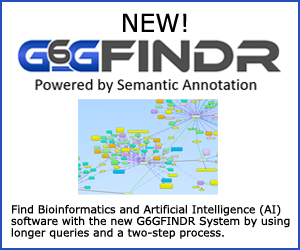Bionet
Category Cross-Omics>Pathway Analysis/Tools
Abstract Bionet is a software tool written by William Bosl that enables researchers to build dynamic models of biological systems by listing participating variables and writing rules for their interaction.
BioNet is based on soft computing methods, sometimes called "hybrid intelligent systems" or "computational intelligence".
These terms refer to a collection of complementary methods including fuzzy logic, genetic algorithms, neural networks, and probabilistic reasoning.
BioNet is still in a development stage. Currently, it assumes that the primary users will be biologists who wish to define dynamical models of biological systems using rules that are written manually.
It also has a basic genetic algorithm that is capable of evolving network models.
In time, it is intended that BioNet will read pathway models from databases in standard formats [such as, Systems Biology Markup Language (SBML) and Biological Pathway Exchange (BioPAX)] and will also incorporate high-throughput data to refine or discover pathway models.
The fuzzy logic model that underlies Bionet is a universal approximator.
This means that it is capable of modeling any nonlinear system or equation, given appropriate data.
The developers hope that this will make BioNet useful for clinical researchers who desire a modeling tool that can represent their linguistic descriptions of any biological process, on any scale, as a computer simulation.
In this way, BioNet may facilitate hierarchical models that span cellular biochemical processes through tissue-level clinical phenomena.
There are several reasons for using rule-based models in biomedical research:
1) Rule-based representations of chemical reactions are relatively simple to write and easily modified, which can be useful when exploring the system effects of different possible reactions through simulation.
2) Modeling is Not limited to processes for which analytical equations are known.
Any process on any scale whose dynamics can be described can be modeled with as much accuracy as the data allows.
Hierarchical models are thus possible that integrate sub-cellular processes with tissue or organ level processes.
3) Future integration of multiple data sources is possible through the use of genetic and other algorithms that optimize models to fit available data.
The current software contains a simple genetic algorithm that can be used to evolve the pathway to satisfy a user-defined fitness criterion.
Extensive future development in this area is possible because the internal system representation, based on fuzzy sets and a fuzzy rule base, is a linear string of numbers.
At this time, Bionet simulations are built manually.
The input files are intended to be straight-forward and easily understood by biologists or clinical researchers.
No particular experience in mathematics or computer modeling is needed beyond the ability to edit text files.
It is the manufacturer’s intention to continue development of Bionet as a tool for integrating multiple data sources to enable basic biological research with a clear clinical orientation.
Computational tools derived from computational intelligence (fuzzy logic, evolutionary algorithms, neural nets, probabilistic methods) will continue to be developed to enable Bionet to evolve pathways and search for ways to manipulate complex biological systems with therapeutic treatments to cure diseases.
The methods used in Bionet are described in the following paper:
Systems biology by the rules: hybrid intelligent systems for pathway modeling and discovery, BMC Systems Biology 2007, 1:13 doi:10.1186 /1752-0509-1-13.
System Requirements
Bionet is written in Java, so it runs under essentially any operating system, including Macintosh, Windows and Linux
Input files are simple text format files, easily understood by non- computer scientists.
A Java Runtime Environment (JRE) must first be installed.
Genetic algorithms generate populations of system models, which can require large amounts of memory and extensive run times.
Manufacturer
- Children's Hospital Informatics Program at Harvard-MIT
- Division of Health Sciences and Technology and
- Children's Hospital Boston
- Informatics Program
- Enders 150.5
- 300 Longwood Avenue
- Boston, MA 02115
Manufacturer Web Site Bionet
Price Contact manufacturer.
G6G Abstract Number 20330
G6G Manufacturer Number 100516







